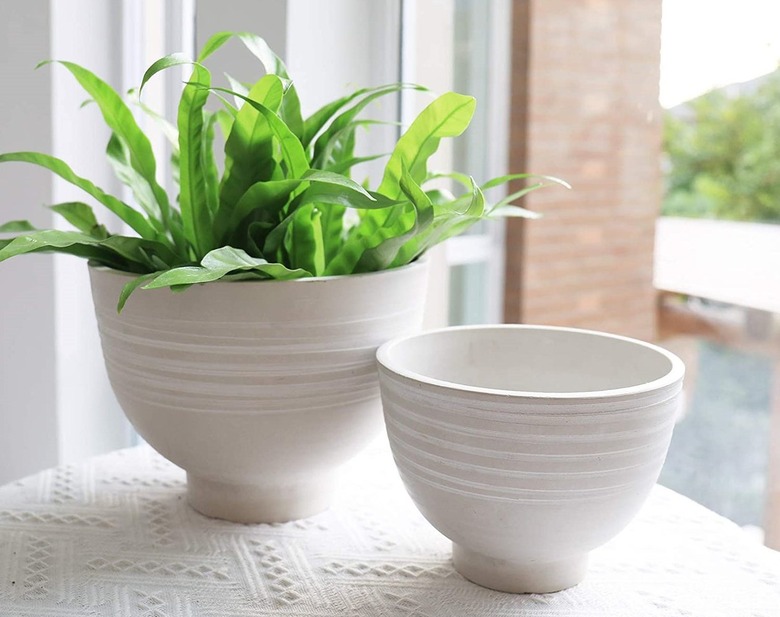How To Drill Holes In The Bottom Of A Plastic Pot
We may receive a commission on purchases made from links.
If your potted plants are suffering from root rot, aside from watering less, what you need are pot drainage holes. Drainage holes ensure that excess water does not pool in the bottom of your pot and drown your plants' roots. The easiest way to create plastic pot drainage is to drill holes in your plastic planters.
Drilling Holes in Flower Pots
Drilling Holes in Flower Pots
Plastic pots trap moisture much longer than clay, terra cotta, or other natural material pots. This is because plastic pots are not as breathable as organic varieties. Therefore, plastic pots, in particular, require pot drainage holes. Many plastic planters come already sporting holes. If you end up purchasing a plastic pot without drainage holes, though, many do come with preformed circular indents designed to drill your own holes.
The easiest way to drill holes in plastic planters that have these indents is to use a power drill affixed with a drill bit. Choose the appropriate drill bit based on the pot's size. A 1/4-inch drill bit works for any pot that's 6 inches or smaller. Use a 1/2-inch drill bit for a pot that's larger than 6 inches. To start, flip your pot upside down on a flat surface. When stabilizing your pot, consider positioning it on top of a towel. Place the point of your drill bit into the middle of one of the indents. Turn on your drill and lightly push down. Repeat this process along the rest of the pot perimeter.
Create a Hole Without a Power Drill
Create a Hole Without a Power Drill
Do you need a power drill to drill holes in plastic planters? Nope! You can also create drainage holes manually using a Phillips-head screwdriver and a hammer. Begin the project the same way you would with a power drill, turning your pot upside down on a stable surface.
Position the tip of your screwdriver into one of the preformed indents and using your hammer, pound down with measured force until the screwdriver punctures the plastic. Repeat around the perimeter of the pot.
When There Are No Preformed Holes
When There Are No Preformed Holes
Every plastic pot, particularly smaller plastic pots, will not necessarily come with preformed hole indents to guide your hole drilling. Luckily, drilling holes in flower pots without preformed markings is also simple.
To create plastic pot drainage completely from scratch, turn your pot upside down and, using a marker, mark where to position your holes on the bottom of your pot. A single hole in the center is suitable for a pot that's 6 inches or smaller. Any pot that's bigger than 6 inches will need a center hole and three evenly spaced holes around the bottom edge. When you've marked your holes, follow the steps for either the power drill or screwdriver and hammer drainage hole drilling methods.
Whichever method you use to create flower pot drainage, when you're finished, rinse your pot to remove any plastic shavings. Once you've cleaned your pot, it's ready for soil and your plant.
Protect Surfaces With Planter Drainage Trays
Protect Surfaces With Planter Drainage Trays
After you drill holes in plastic planters, water will drain out of your pots. To protect your surfaces, particularly indoors, place your plastic pots on planter drainage trays or inside of a decorative planter without holes. These trays and planters catch run-off water that drains from your plants, keeping your surfaces dry.
